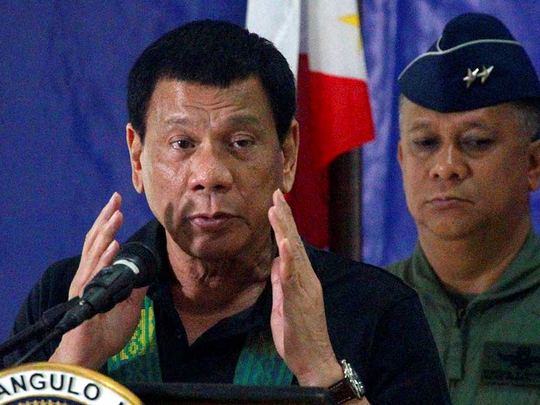
Manila: Philippine President Rodrigo Duterte said on Friday he has ended the government’s six-month ceasefire with communist rebels and ordered troops to prepare for new fighting after the guerrillas lifted their own truce and killed six soldiers in fresh violence.
It was in response to the decision of the National Democratic Front (NDF), the negotiating arm of the 48-year old Communist Party of the Philippines and its armed wing, the New People’s Army (CPP-NPA), to end NPA’s unilateral ceasefire with government soldiers on February 10. Both the government and the NDF declared their respective unilateral ceasefires last August to pave plans to forge a bilateral ceasefire.
“Last night [On Thursday], I decided to lift the [government’s unilateral] ceasefire because of the communist’s unreasonable demands,” said Duterte, adding, “I went out of my way to release their leaders, went to Oslo [and joined peace talks the Philippine government-NDF peace talks there], Now, they are demanding for the release of 400 more political prisoners. That would be asking me to grant amnesty.”
“I do not own the Republic of the Philippines. I do not decide alone. I consult people particularly military,” he said, adding, “Peace with the communists cannot be realised during our generation.”
Duterte initially released 22 political prisoners including 18 top leftist leaders who participated in the government — NDF second formal talks in Oslo last October 2016.
Defence Secretary Delfin Lorenzana said, “They [CPP-NPA] have not stopped extorting under the guise of their so-called revolutionary taxation, went on recruiting, burning buses and equipment, ambushing and kidnapping soldiers.”
Presidential Adviser on the Peace Process Jesus Dureza said the Philippine government should not end its unilateral ceasefire with the NPA as a goodwill gesture for the ongoing talks between the government and the NDF.
A bilateral ceasefire between the two parties would have set guidelines and protocols for both sides, he explained.
One soldier was killed and one was wounded during the incident when government soldiers and NPA fighters clashed in Manay, Davao oriental, on February 1, after the NDF withdrew NPA’s unilateral ceasefire.
Eight soldiers and one communist fighter were killed in a clash in Makilala, North Cotabato in southern Philippines, on January 21.
On July 30, 2016, Duterte also withdrew the government unilateral ceasefire after the NDF failed to beat the ultimatum for the group to reciprocate. Four soldiers were also killed at the time.
When the NDF withdrew NPA’s unilateral ceasefire on February, a spokesman accused the military of encroaching on red zones held by communist rebels,
Reaching 26,000 casualties in the 70s, and 5,000 in the 80s, the CPP-NPA has been blamed for deadly assassination of erring police and military men; and collecting taxes from businessmen. The class-based rebellion has claimed 30,000 lives.
After the Philippine government and the NDF began talking in 1992, Congress repealed the anti-subversion law to lure leftist leaders to the negotiating table. Since then, however, leftist political leaders and members were arrested and accused on trumped-up charges and other non-bailable offences — thus the increasing number of political prisoners.
Despite of thinning members, the CPP-NPA has remained in control of far-flung villages that hardly receive government services.











